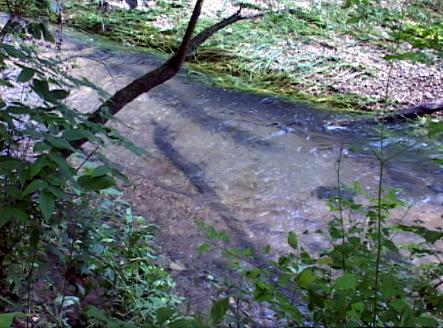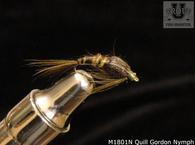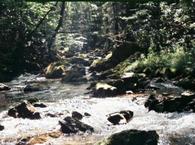
Crane Creek is a 23 mile long tributary of the James River that offers a unique fly fishing experience. The Crane is fed by springs and limestone sinks giving it a high pH level. The pH level causes Crane Creek to be especially fertile and the host of some of the most prolific insect hatches. This fertile stream provides an ideal habitat for the pure strain of McCloud River Rainbows and it is said to be one of only three populations of the McCloud Rainbows. The cool rich water from these springs is further enhanced by a canopy of low hanging box elder and sycamore trees. The exceptionally clear water flows over a sandy bottom strewn with pebbles and dotted with tufts of waving grass. Although the Crane is somewhat smaller (seldom over 25 feet wide) than most streams, it contains some large trout that are capable of putting up a great fight.
The wild rainbows in this ideal environment are indeed difficult and challenging to catch which benefits the stream since most anglers prefer to seek easier targets such as those trout found in the tailwaters of Arkansas and Missouri. Having the “flies only” and a “catch and release” regulations further protect the fishery.
Naturally, stealth is very important, but there is a lot more to it than that. You must get close enough to a trout to present your fly without being seen. That is easier said than done on Crane Creek. There is little cover for the angler except for the vegetation overhanging the creek. It is not easy casting to a trout without the trout being spooked by you.
Crane Creek is much like Abrams Creek in the Great Smoky Mountains National Park because if flows underground for a portion of it’s length and because of the fertility. The picture above along with some exerpts are provided by my good friend James Marsh.
Fly fishing the Crane Creek
Fishing Crane Creek is far more difficult when the water is low and clear so stealth is the order of the day. If possible, avoid the urge to wade this stream, since the best approach will be keeping low and casting from the banks. In some instances, it may be necessary to employ the “slingshot” method of fishing.
Use medium action rods in the 8 ½ to 9 foot length and reels with a good drag to avoid loosing a larger trout. Although most of the trout will be in the neighborhood of 9 to 12 inches there are occasions when monsters of 20 or more inches will hit.
Use a 4 or 5 weight floating line tied with 3X leaders for streamers and up to 7X leaders for the small dry flies. They should be at least 9 feet long and, even on occasion, up to 12 or 15 foot in length. For nymphs, you may want to use the shorter leaders. Keep your tippets in sizes ranging from 3X to 7X. Match the hatch using small flies and we recommend the Perfect Fly series of flies. The Perfect Fly series of mayflies, cadis and midges are perfect imitations of the real insect.
Spring:
Spring is an ideal time to fish Crane Creek. Start in March with the Blue Winged Olives, Light Cahills, and Black Cadis. Starting later in the summer terrestrials will be effective due to the vegetation that surrounds the creek.
Summer:
Although the water leaves the springs at a relative constant temperature of 55 degrees F, it can quickly heat up in the summer so the better odds will be in the early morning or late evening. Starting later in the summer terrestrials will be effective due to the vegetation that surrounds the creek. If the water is too warm it would be wise to avoid the stream so as not to be too stressful on the trout.
Fall:
The Fall season may be the best time to fish Cane Creek as the water cools down and the high fertility of the water gives a good population of crayfish, scuds and nymphs.
Winter:
Winter fishing on the creek is fairly good and the midge imitations will work as well as streamers.
From Springfield take US Highway 60 to a left turn on Rt. 13 for another 8 miles until you can turn right on a small country road and continue to the parking area for the Wire Road Conservation Area. Also, Crane Creek flows through the park in the town of Crane. If you are fishing in the land owned by farmers,
View Larger Map be sure to request permission and they have been accommodating in the past.
We reccomend Perfect Fly series of flies to most closely imitate the true aquatic insects. Why?





